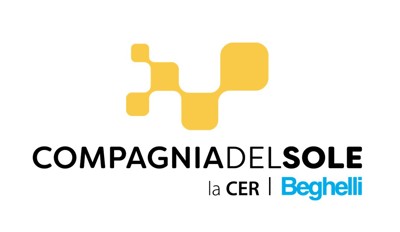Energy communities represent an innovative model of energy production and consumption, based on the principles of sustainability, autonomy and collaboration between citizens. These initiatives allow groups of individuals, companies or public bodies to share energy produced locally from renewable sources such as solar, wind and biomass. In addition to improving energy efficiency, energy communities promote an inclusive and participatory approach to energy management.
RECs can play a priority role in promoting the energy transition and circular economy, pillars on which to focus for sustainable development. These concepts promote decarbonisation goals and the use of waste as a resource, while respecting the environment and people. Through the energy transition, dependence on fossil fuels is reduced, while the circular economy allows waste to be reduced and turned into opportunities.
A further element to support CERs in green transition processes is the Energy Service Company (ESCO), certified according to UNI 11352. As envisaged by the recent CACER Decree, in fact, these companies guarantee the efficiency and continuity of plants, making the entire life cycle of energy communities sustainable.

Beghelli, for over 40 years a brand synonymous with quality, reliability and safety, which can offer customers a wide range of services in the field of energy saving: photovoltaic systems, storage batteries, home automation, smart meters, LED lighting and more.
Compagnia del sole Beghelli is responsible for promoting and activating CERs in the area, also providing members with the possibility of using the services of design, implementation, testing and routine maintenance of photovoltaic systems, at reserved economic conditions.
Thanks to this sharing system, a community fabric is created that optimises the use of renewable energy, producing a general economic, environmental, cultural and social benefit.
Renewable Energy Communities (RECs) offer several advantages:
- Renewable energy and emission reduction: Energy Communities promote the adoption of renewable energy sources, such as photovoltaics, wind or biomass, contributing significantly to the reduction of CO2 emissions. This model aligns perfectly with the European Green Deal goals, which aim to decarbonise the economy by 2050 by stimulating investment in green infrastructure.
- Energy self-sufficiency and cost optimisation: one of the main advantages of CERs is collective self-consumption, which allows participants to produce and consume the energy produced locally, reducing dependence on large energy suppliers. This translates into a significant reduction in bill costs for end users and, in some cases, the possibility of generating income from feeding excess energy into the grid. In addition, energy autonomy makes municipalities more resilient and less vulnerable to energy price fluctuations on the global market.
- Participatory management and local benefits: energy communities create a participatory management model that actively involves citizens, businesses and public bodies. This strengthens the social fabric and encourages the development of cooperative projects, where economic and social benefits are distributed among community members. The sharing of energy and economic benefits makes these solutions a powerful tool for social cohesion and local development.
- Economic and employment development: the introduction of renewable technologies on a local scale stimulates the creation of new jobs in the green energy sector and contributes to the development of specialised skills in the area.
It produces energy
and feeds it into the grid
Is not part of the Renewable Energy Community, but owns a renewable energy plant and can make the energy produced available. It shares the excess energy in the community, ensuring that the electricity produced by its plants is included in the ERC's budget, participating in the obtaining and subsequent redistribution of incentives.
Energy consumers
These are the members who do not own renewable energy installations, but consume the excess energy produced by Prosumers. They are therefore those who take part in Collective Self-consumption. Consumers will not directly see a benefit in their bills. The use of the energy produced by the CER, however, allows them to benefit from the incentive from the Gestore Servizi Energetici (GSE) for shared energy.
Self-consuming energy
and feeds surpluses into the grid
It is the members who set up renewable energy installations on their own buildings or areas. The energy produced is used for self-consumption according to one's own needs (directly lowering costs on the bill). The surplus energy produced is instead fed into the grid and shared with other consumer members of the CER, serving the Collective Self-consumption.
